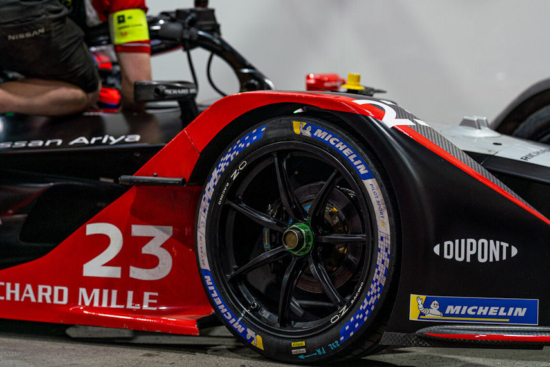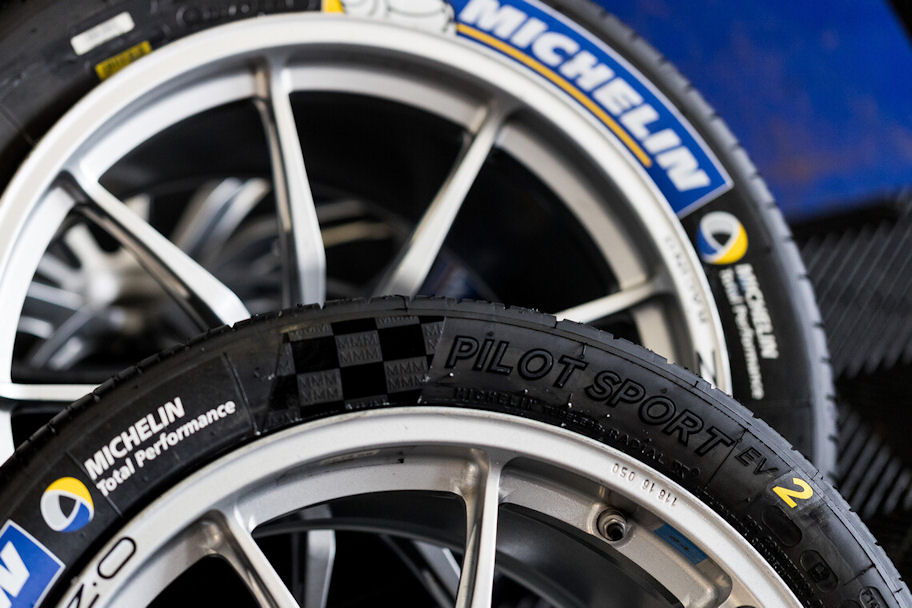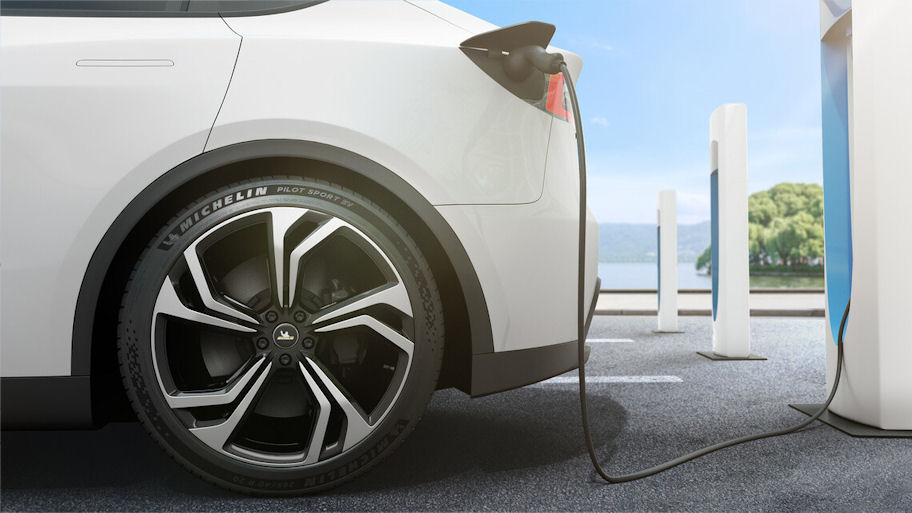Michelin looks back at 8 years of Formula E innovation
 The tyre maker believes it has “made a concrete contribution to the success enjoyed by Formula E today” (Photo: Michelin)
The tyre maker believes it has “made a concrete contribution to the success enjoyed by Formula E today” (Photo: Michelin)
A founding partner of the world’s first all-electric single-seater racing series and an investor in the project from the outset in 2013, Michelin is parting ways with the ABB FIA Formula E World Championship following the 2021/22 season finale. With Hankook limbering up and ready to take over next year, the French tyre maker has looked back on its eight years with the championship, convinced that its work in close collaboration with organisers, teams and constructors and the FIA has “made a concrete contribution to the success enjoyed by Formula E today.”
Furthermore, Michelin expresses confidence that technologies developed in Formula E have helped the brand emerge “a step ahead in the electric vehicle tyre market.” Matthieu Bonardel points to the Michelin Pilot Sport EV road tyre as the “perfect illustration of how motorsport can foster the transfer of knowledge and accelerate the development of tyre ranges for road vehicles.”
Michelin has drawn upon its research capacity and motorsport experience to “innovate and sign-off technological advances” across the “exceptionally wide spectrum of conditions” encountered during the past eight seasons. Given that races are held at street circuits that are otherwise open to regular traffic, it opines that these conditions can in many ways be compared directly with those ordinary motorists face every day.
Bonardel, director of Michelin Motorsport, elaborates on the subject, stating that “it is by favouring this sort of progress that Michelin Motorsport is able to make such decisive contributions to achieving the goals laid out in the Group’s Everything Sustainable plan, while forging a valuable edge over other tyre brands.”
Michelin & Formula E – 3 phases
Michelin views the progress it has made through its involvement in Formula E as covering three main phases:
2014: 1st tyre for world-class electric single-seater racing
From the outset, the original Michelin Pilot Sport EV racing tyre featured a patterned tread similar to that of a road tyre. Michelin comments that it based the decision to propose a solution for street circuits that resembled an everyday tyre – in contrast to non-treaded slicks – upon a clear technological vision. Specifically, it chose to “push the envelope in terms of versatility and longevity” and thereby reduce the number of tyres needed for each e-prix to one set per car per race.
While delivering the performance-related qualities expected of a tyre engineered to equip a racing car capable of accelerating from standstill to 100 km/h in less than three seconds (similar to a Formula 1 car), this similarity to a road tyre also enabled Michelin to sign-off innovations in racing and carry them over to road-going ranges in record time.
Indeed, in 2015, just a year after the introduction of its first-generation solution for Formula E, the French brand launched the Michelin Pilot Sport 4 which featured a tread pattern identical to that of its racing counterpart. “This extremely short lead-time from concept to production represented a first in the field of technology transfer,” comments Michelin
2016: An additional race lap
Eager to build on the Pilot Sport EV’s initial success, Michelin turned its attention to reducing rolling resistance, a factor significantly influencing the range of any vehicle and an area of particular importance in the case of electric cars.
The fruit of two years of research and development, the Michelin Pilot Sport EV2 race tyre launched ahead of the 2016/2017 FIA Formula E Championship and delivered a 16 per cent gain in rolling resistance compared with its predecessor. This improvement was achieved with no detriment to the latter’s performance.
Thanks to the Pilot Sport EV2, Formula E cars gained the potential to complete an additional lap at races.
Michelin Pilot Sport EV2 (Photo: Michelin)
2018: 4 tyres weigh the same as 3
The 2018/2019 Formula E season saw the introduction of the championship’s new Gen2 single-seaters. To equip these more powerful, faster cars that boasted even longer range, Michelin’s engineers continued to push the boundaries, with a particular focus on the third-generation Pilot Sport EV’s mass.
With each tyre tipping the scales as much as 2.5kg less than the former version, the total weight saving amounted to practically 10kg per set of four, the equivalent of a single front tyre. This appreciable improvement was not only significant because it meant less weight needing to be transported to and from races, but it also resulted in fewer raw materials having to be recycled.
At the 2019 Marrakech E-Prix, second round of the 2018/2019 FIA Formula E Championship, the new cars were a whole three seconds a lap faster than they’d been in comparable conditions at the previous season’s visit to Morocco.
Technological progress benefits road tyres
Thanks to the technologies developed in Formula E, Michelin claims it has emerged a step ahead in the electric vehicle tyre market. “As leader of this new segment of its own creation, Michelin is one of the few manufacturers to offer the motoring public a choice of two tyre ranges aimed specifically at new-generation electric vehicles,” states the manufacturer. It adds that both tyres, e.Primacy and Pilot Sport EV, owe their “differentiating qualities and technology to Formula E.”
8 years of Formula E has brought Michelin a “step ahead in the electric vehicle tyre market” (Photo: Michelin)
Motorsport an accelerator for sustainable innovation
Michelin views motorsport as an indispensable part of the process of speeding up the development of new sustainable solutions.
“Motorsport enables the Group to innovate, test new ideas, learn and transmit the expertise it gains, while at the same time evaluating new technologies in extreme conditions in record time,” comments Matthieu Bonardel. “Michelin Motorsport plays an essential part in the Group’s interaction with its partners and carmakers who are looking for ambitious, concrete solutions geared to sustainable, low-carbon mobility.
“Michelin’s involvement in motorsport enables it to acquire specific skills and expertise that only high-level sport can provide, in association with exacting manufacturers and partners who face identical challenges.”
While Michelin is withdrawing from Formula E, it continues to see motorsport as an “exceptional laboratory.” The tyre maker points to its work with sustainable materials as evidence of this, noting that over the last two seasons it has increased the average proportion of sustainable materials that go into the production of its tyres for motorcycle racing’s FIM MotoE World Cup to 40 per cent.
Meanwhile, Michelin is working on the MissionH24 project which is paving the way for hydrogen fuel-cell electric prototypes to compete in the Le Mans 24 from 2025. A new tyre for the programme containing 53 per cent biosourced/recycled raw materials was recently revealed.
In association with Zuffenhausen, Michelin similarly equips the new, 1,000-plus horsepower Porsche 718 Cayman GT4 ePerformance with a tyre that comprises 53 percent sustainable materials. Porsche is already running this tyre for the model’s demo tour which included the recent Goodwood Festival of Speed in the UK.
By 2050, Michelin’s aim is to manufacture all the tyres it makes using sustainable materials alone, with an interim target of 40 percent by 2030.





Comments